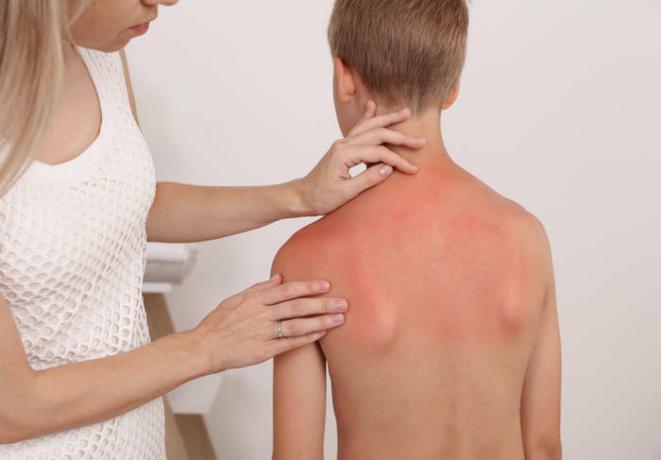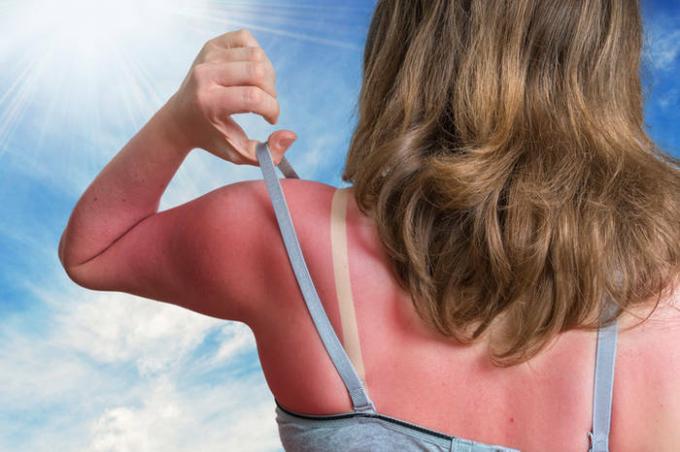Prevention of sunburn in children and adults. How to help with a burn at home. What skin lesions need to go to the doctor
The abnormal heat wave, which has been around the country for the third week, has brought the problem of sunburn to the fore. Yes, in the summer you can get them in just half an hour in the open sun. The special insidiousness of sunburn lies in the fact that it is not possible to notice a skin lesion immediately, but only 2-3 hours after it happened.
What should you do to protect yourself and your child from this problem? How to help with a burn? What means will bring relief, and what, on the contrary, will only make it worse? The pediatrician told about it Irina Lukankina.
To begin with, a brief educational program. Sunburn is skin damage caused by direct sunlight. The skin can react in different ways in response to cell damage. In people with a light phototype (1 and 2), inflammation immediately begins, in those with a darker skin (phototype 3,4 and 5), melanin is first produced and a tan appears.
Strictly speaking, both a sunburn and a burn are two types of damage to the top layer of the skin. But tanning in the early stages protects against inflammation. However, both light-skinned and dark-skinned people can burn out in the sun to a state of burn. For people of the first and second phototype, 15 minutes in the open sun is enough for the skin to get damaged. For the darker, 1-2 hours will be enough.
Prevention of sunburn

We do not go out into the sun and are actively smeared with cream / istockphoto.com
Ideally, sunburn is best avoided. “The generally accepted rule: at the peak of solar activity, direct sunlight should be avoided on the skin,” says Irina Lukankina. - In our strip in the summer, this time is approximately from 11 to 16 in the evening. For good, at this time we should not appear in the open sun at all. If these are walks, then they should be in the shade. If not in the shade, then these are closed clothes, a hat with brim, the longest sleeves and legs. For people with very sensitive light skin, there are special clothes with a UV filter. "
During any walks to open skin areas, be sure to apply sunscreen. “It should be applied 15-20 minutes before sun exposure, and renewed every 2 hours,” recommends Irina Lukankina. - Even if you don't bathe, the protective layer is washed off the skin during perspiration. Bathing is a separate topic, in this case the cream should be renewed immediately after leaving the water. "
Don't look at the words “waterproof” on the cream label. According to the norms, this word can be written in the event that the cream remains half active after two 20-minute baths. Pay attention to the word "half." After entering the water, you get a floor protection instead of the declared SPF level.
Also, before going outside or going to the beach, be sure to check the level of solar activity. This indicator is now indicated in almost all weather forecast applications. If the word “tall” is on the site next to this column, we postpone the planned walk or protect ourselves from the sun as much as possible.
First aid for sunburn

Sunburn can be quite painful / istockphoto.com
The insidiousness of sunburn (unlike other thermal skin lesions) is that it is not immediately visible. “If the burn has already occurred, then we will see and feel the first signs of it only after 2-3 hours,” says Irina Lukankina. "The maximum manifestation of skin lesions will occur approximately 12-13 hours after exposure."
The good news is that this is a self-passing phenomenon. Even if you do nothing, after 4-10 days, depending on the degree of damage, the symptoms will disappear and the skin will heal itself. “If it’s just redness, it will disappear by 3-4 days, if it’s a pronounced burn with blisters and detachment of the epidermis, it will heal longer, by 7-10 days, and will come off by peeling of the skin,” the expert says.
The unpleasant news is that today there are no products with proven effectiveness that can accelerate skin regeneration. All you can do is to relieve your condition, because the burn can be quite painful.
- With severe pain, you can take antipyretic, advises Irina Lukankina. Not to lower temperatures, but to relieve pain. Ibuprofen is best suited for these purposes. But paracetamol can also have a good analgesic effect. For adults and children, the drug should be given symptomatically at an age-related dosage.
- Lotions and gels with aloe vera do not have a bad local effect. They moisturize and cool the skin and can also reduce the discomfort at the burn site. Take a cool shower and gently blot the affected area with water, and then apply a cosmetic product to the burn.
- From medications for sunburn, sprays and gels containing panthenol are suitable. It relieves inflammation of the upper layer of the skin, and temporarily relieves pain. You can also apply hydrocortisone to the affected areas of the body. However, for these purposes it is better to buy not an ointment, but an emulsion for external use.
- If the burn is accompanied by edema, it is permissible to take an antihistamine or apply a gel with an antiallergic component to the burned area.
- With a sunburn, be sure to drink as much liquid as possible - preferably clean cool water. To regenerate damaged skin, the body "removes" water from all other parts of the body, therefore, with burns, there is a high risk of dehydration
- Sour cream, kefir, cucumbers and cabbage leaves have a place to be. But remember that all these folk remedies do not heal, but only cool the damaged skin. “Compresses with cool water can be used with the same effect: wet a towel and apply on the burnt area,” comments Irina Lukankina.
What not to do with sunburn

In case of severe skin lesions, we go to the doctor / istockphoto.com
- If the skin is exposed to the sun, it is not recommended to apply topical pain relievers (such as lidocaine or benzocaine) to the skin. In addition to burns, they can cause irritation and even result in an allergic reaction.
- You do not need to apply ice from the freezer to the affected area. First, it spasms blood vessels and slows down blood circulation, thereby inhibiting the process of skin regeneration. Secondly, by "overexposing" the ice, you can also cause a cold burn on a sore spot.
- Do not use vegetable or vegetable matter on the burned area. cosmetic oil. It creates a film on the surface of the skin and makes it difficult for air to enter. Simply put, it prevents the natural cooling of the burn
If the burn is severe, widespread and accompanied by blisters, be sure to monitor your general well-being. “The fact is that the substances of the affected skin cells can cause intoxication in the body. Nausea, vomiting, headache, and fever are all clear signs that you need to see a doctor. Sometimes, in case of burns with such a pronounced intoxication, treatment in a hospital may be necessary, ”sums up Irina Lukankina.
You will also be interested to read:
5 reasons not to sunbathe in the summer in the sun: it's deadly
Sun allergy in a child: causes, symptoms and treatment


